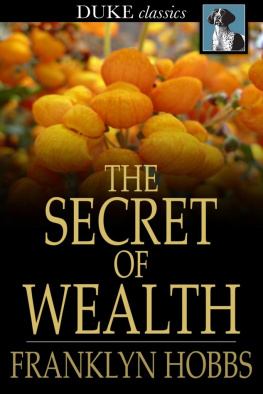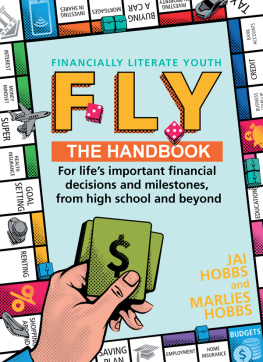Contents
Guide
ALSO BY JEFF HOBBS
The Short and Tragic Life of Robert Peace
The Tourists

Scribner
An Imprint of Simon & Schuster, Inc.
1230 Avenue of the Americas
New York, NY 10020
www.SimonandSchuster.com
Copyright 2020 by Jeff Hobbs
All rights reserved, including the right to reproduce this book or portions thereof in any form whatsoever. For information, address Scribner Subsidiary Rights Department, 1230 Avenue of the Americas, New York, NY 10020.
First Scribner hardcover edition August 2020
SCRIBNER and design are registered trademarks of The Gale Group, Inc., used under license by Simon & Schuster, Inc., the publisher of this work.
For information about special discounts for bulk purchases, please contact Simon & Schuster Special Sales at 1-866-506-1949 or .
The Simon & Schuster Speakers Bureau can bring authors to your live event. For more information or to book an event, contact the Simon & Schuster Speakers Bureau at 1-866-248-3049 or visit our website at www.simonspeakers.com.
Interior design by Kyle Kabel
Jacket design by Rodrigo Corral
Jacket Photograph Alessandra Sanguinetti/Magnum Photos
Library of Congress Cataloging-in-Publication Data has been applied for.
ISBN 978-1-9821-1633-0
ISBN 978-1-9821-1635-4 (ebook)
To Dad, Mom, Bryan, Lins, and Andy. My own high school years were unremarkable except for having you as their anchor.
You road I enter upon and look around, I believe you are not all that is here, I believe that much unseen is also here.
Walt Whitman, Leaves of Grass
Authors Note
Although my book is intended mainly for the entertainment of boys and girls, I hope it will not be shunned by men and women on that account, for part of my plan has been to try to pleasantly remind adults of what they once were themselves, and of how they felt and thought and talked, and what [strange] enterprises they sometimes engaged in.
So wrote Mark Twain in his preface to The Adventures of Tom Sawyer, and so was my own intention while spending many hundreds of hours with the young peopleall high school seniorsdescribed in these pages. I spent those hours in order to capture not just a vital, fleeting passage of life, but also a moment in our countryone whose significance very few foresaw in the late summer of 2016 when this work began.
I had previously been invited to speak at both nimo Pat Brown Charter High School and Beverly Hills High School, and so I was acquainted with administrators and teachers who graciously permitted me wide access during the 201617 school year and introduced me to the students whose stories comprise this book. During that year, I went to classes, dances, sports games, school board meetings, assemblies, plays, homecomings, proms, graduations. I visited homes and spent time with parents and grandparents and siblings. I willingly entered gridlock to intercept four separate points of the Los Angeles Marathon, in which one of the students ran. But for the most part, I just sat with these boys, typically over takeout from In-N-Out Burger, and talked frequently throughout the yearabout their days, their futures, their hopes and doubts, their challenges both known and unknown, as well as the whimsical moments from which much of their lives was wrought. The stories within this book largely take place in schools, but this book is not necessarily about school. This book is about peoplemostly young people who are foolish and flawed and impulsive, of course, but who are also (I believe) among the best of us. They are certainly the future of us.
In my first remarks to these boys, I stated that I was not interested in having them try to represent a race, a neighborhood, a school, a socioeconomic condition. I asked that they try, as best they could, only to represent themselves.
I was physically present for many but not all of the events written. Those I was not present for were reported to me in detail by people who were there, including dialogue and other fine details.
The internal workings of individual minds were also reported to me in recorded interviews and written as closely to their descriptions as I am capable ofnot quite in real time and stream of consciousness, but not far removed.
Data regarding neighborhoods and the various educational systems described were pulled entirely from publicly available documents.
A number of names have been left out of these pages, but only two names in the pages have been changed.
nimo Pat Brown Charter High School | Beverly Hills High School |
|---|
Florence-Graham, California | Beverly Hills, California |
Tio Carlos Luis Byron | Owen Jon Bennett Harrison Jonah |
PART I

Fall
Chapter 1
AUGUST 11, 2016
Its school so it gets crowded, theres noise. But even when its loud, its a healthy loud, people wanting to express their opinions. Its a peaceful loud.
Tio
Tio
A young man wearing a navy blue collared shirt and khaki slacks walked north along Juniper Street. A light backpack was strapped tight to both shoulders, and he tucked a battered, much-decaled skateboard between his forearm and hip. His hair was carefully treated to form a slick vertical wave off his forehead, and he walked with a slight limp gained from a skate park crash the previous afternoon, his last of summer. Hed lost purchase on his board during that weightless instant between upward momentum and downward fall; hed also heard a popping sound within his knee upon contact with the asphalt but thought little of it. His skin was bronzed by both his Mexican heritage and the myriad afternoons spent skating over the past June and July, and his body was lean and strong. At the corner of Juniper and 103rd Street, he tossed his board to the sidewalk pavement and jumped on in a fluid, propulsive motion. At seven thirty in the morning, the sun already blasted down at a steep slant and he quickly sweat through his shirt. The summers heat wave felt fixed and eternal. Gingerly, he pushed himself from his familys current bungalow, past the bowed stucco apartment complex they used to live in and the lot where at another point theyd occupied a trailer home for a time (Tio had spent his entire life on Juniper Street). He proceeded in a stairway pattern alternately left and right, west and north, along busy Compton thoroughfares and quiet residential streets, passing the elementary school at Ninety-Second and Grape Street, then the tall electric towers standing over dense weed entanglements on Fir Avenue, the Rio Grande Market on Eighty-Eighth, the Church of God in Christ on Milner. Cars made hard right-on-red turns in front of him despite the solid white walk signs giving him the right of way. Soon he met the massive concrete anchors of the blue Metro line connecting downtown Los Angeles with Long Beach along Graham Avenue, and he made his way due north, parallel to the tracks, toward school.

















 Fall
Fall